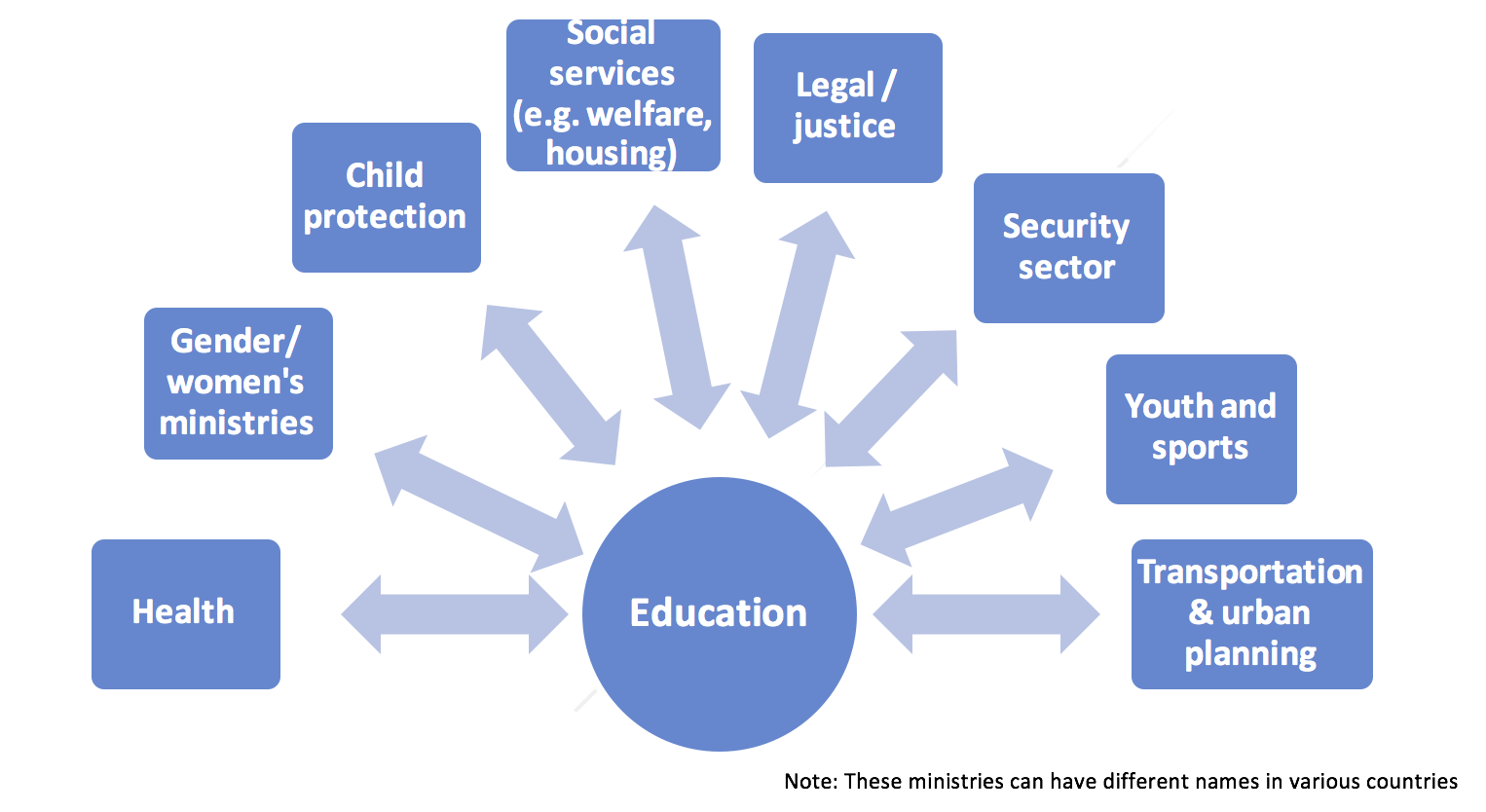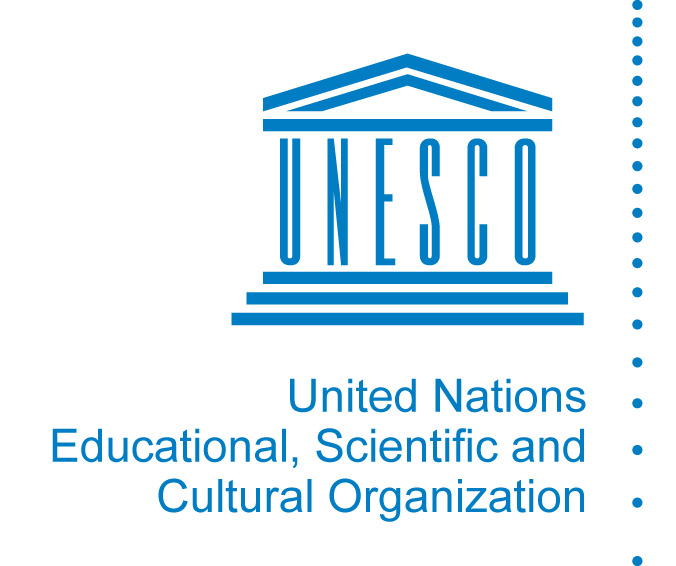Why is coordination with other sectors so important for SRGBV?
SRGBV is rooted in complex structural and sociocultural factors, such as social and cultural norms, gender inequalities and power dynamics. Efforts to prevent and respond to it require a comprehensive, multisectoral approach with the education sector working in collaboration with other sectors, such as health, social services, law enforcement, the judiciary, the security forces or military, gender/women’s ministries and child protection authorities.
Example of the range of partners involved in a SRGBV response led by the education sector

Addressing SRGBV through a multisectoral approach can involve coordination with various different sectors over multiple timeframes and at multiple levels. It includes cooperation at the national level between ministries around the overall legal/policy framework, but also coordination at the ‘thick middle’ – the middle-level between national (policy) level and school level, including head teachers, regional or district officers, teachers’ unions and other school organizing bodies (e.g. principals’ associations).
Most countries have inter-ministerial task forces/committees on violence against women or violence against women and children at the national level. It is important for the education ministry to be involved in this mechanism for continuity and sharing across disciplines.
|
Country examples of coordinating with other sectors on SRGBV |
|
|
Developing policy frameworks |
Peru: Since 2013, the Ministry of Education has been coordinating a national education policy framework against school violence. Its Escuela Amiga (‘Friendly School’) policy works across multiple ministries and focuses explicitly on building an institutionalized, system-wide approach to preventing SRGBV (Varela et al, 2013). |
|
Inter-ministerial task forces and committees |
Bahamas: In 2013, the Government of The Bahamas appointed a National Task Force for Ending GBV. The task force involved a coordinated approach between different ministries, including the Ministry of Education, Science and Technology. Other ministries included Social Services, Urban Renewal, the Attorney-General, National Security, Police, Families and Children, Child Protection, Youth, Sports and Culture, Health, and Women’s Affairs, as well as NGOs such as the Salvation Army, Bahamas Crisis Centre and the Bahamas Christian Council. In addition, a Ministerial Committee was appointed to have oversight of the National Task Force, including the Minister of Education, Science and Technology. The high-level task force is responsible for sharing information and making recommendations about practices, policies and protocols. This is in addition to developing an efficient, comprehensive and coordinated national response at the system level, as well as at the integrated case management level, and helps to facilitate networking between ministries, departments and NGOs working on GBV (Maura, 2013). |
|
Bi- or inter-ministerial accords |
Guatemala: The National Plan for Strategic Action for 2007–2017 includes a Guide to the Prevention of School Harassment and an awareness-raising and information campaign on school harassment, deriving from a bi-ministerial accord (Health and Education). In 2013, the ministries of health and education reaffirmed their commitment to working together to design and implement a comprehensive sexuality education programme for youth in nine regions of the country (Hunt et al, 2014; UNICEF, 2014a). |
|
Sharing regular information |
England: The Young People’s Programme (funded by the Department of Education) brings together local agencies to share information between local services. Regular local meetings of service agencies discuss individual cases of young people requiring support and develop a risk-focused, coordinated safety plan to support them. |
|
Monitoring and evaluation |
Côte d’Ivoire: The Ministry of National Education and Technical Education established a framework for the coordination and monitoring of child protection strategies as part of a national cross-sector policy on child protection introduced in 2012 (UNESCO/UNGEI, 2015). |
|
Curriculum design |
Philippines: The Department of Education invited other sectors to provide inputs on developing the school curriculum (K +12 Curriculum) to integrate child sexual exploitation within GBV and link children to sexual and reproductive health and GBV services. Central to this was the involvement of a national committee and advocacy group – the National Steering Committee – formed by family planning organizations in the Philippines and Department of Health (UNESCO, 2014). |
